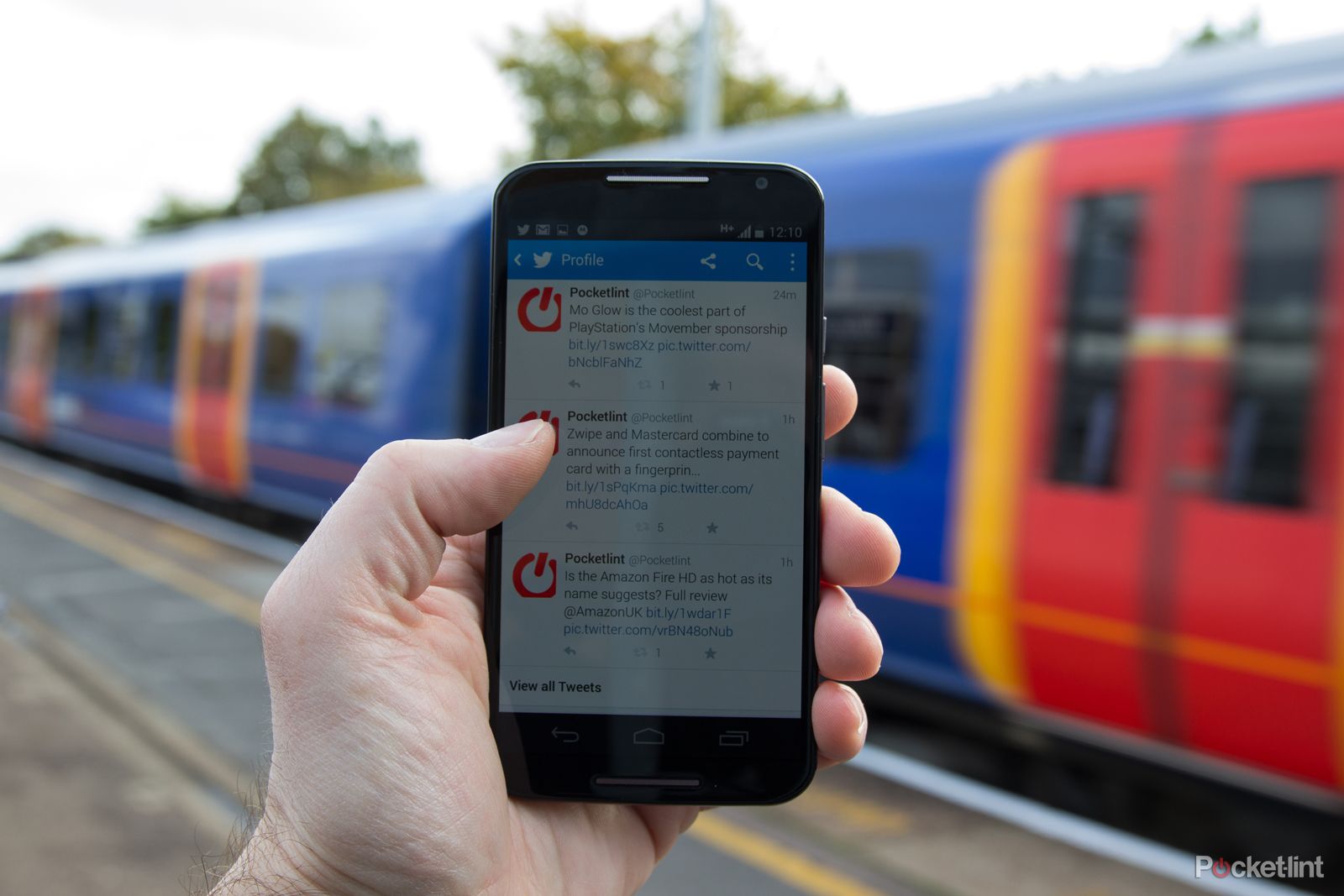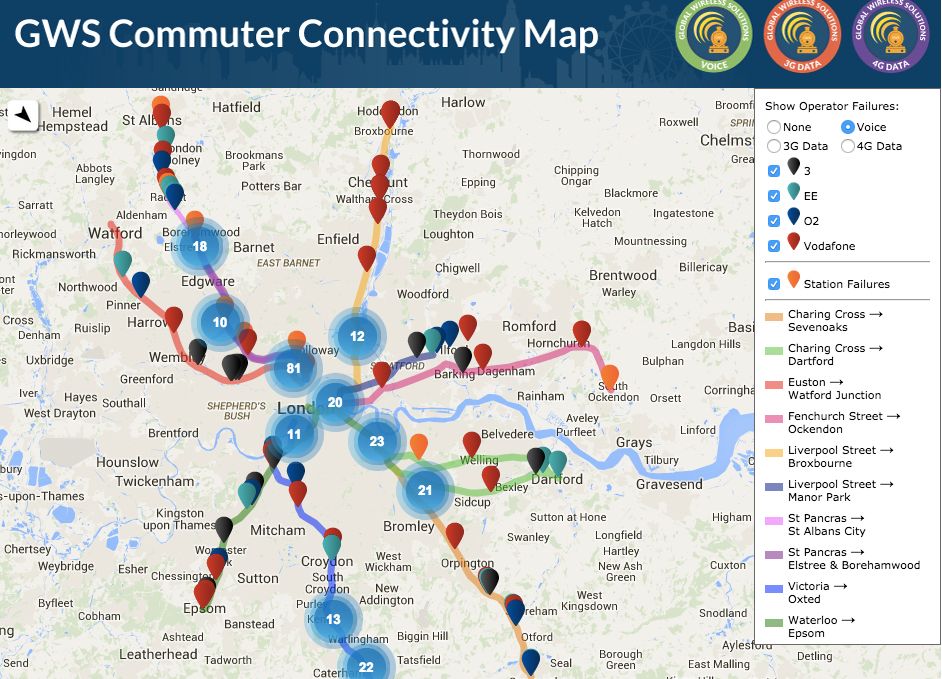If you spend a lot of time on commuter trains around London, you'll know the frustrations you face when trying to use your mobile devices. Now, thanks to research by Global Wireless Solutions, we can put a figure on just how bad cellular connections are on our railways.
The company set out with 12 Samsung Galaxy S4 devices, with SIM cards from Three, EE, O2 and Vodafone to test voice calls, 3G and 4G data connections, to test the network performance on the ten most popular commuter routes in and out of London.
The results won't come as a surprise if you're a suburban commuter: 1 in 3 mobile internet tasks fails and 1 in 7 voice calls are dropped on commuter trains.
Three emerged as the best network for talkers, offering the best call quality, as other networks often rely on older 2G networks, resulting in worse quality calls.
The best 3G data service is offered by Vodafone, but EE offers the best and fastest data connection with its 4G network, although both experienced plenty of dropped data packets.
The results found the performance was bad both on the track and while in stations, with St Pancras being highlighted as the worst station tested overall.
"Pressure from commuters makes it inevitable that trains won't keep their status as mobile dead zones for much longer. It'd be great to see networks, rail operators and station-masters taking the lead on improving connectivity for commuters - rather than having to be dragged into the 21st Century kicking and screaming," said Paul Carter, CEO of GWS.
HS1, owner of St Pancras station has responded to the test allegations admitting that the underground elements of its Thameslink line can experience drop-out, but claims that all above ground areas have excellent mobile connectivity.
"St Pancras International station has excellent voice and data connectivity for mobile internet usage in all its public spaces at ground level and above," it said in a statement sent to Pocket-lint.
"There are 15 train platforms at St Pancras station, two of which are underground. It is these two platforms, used by Thameslink trains, that were tested by GWS this week, and found to have low levels of voice connectivity."
It is an issue, it told us, that is being addressed by wireless internet access.
"Wi-Fi nodes were installed earlier this year to help give passengers on those two underground platforms access to data connectivity. These nodes are part of a broader roll-out of a new Wi-Fi network at St Pancras that will provide 20 times the existing capacity of the station’s Wi-Fi, allowing more than 7,000 people to stream HD content simultaneously," the owner added.
Wi-Fi was not one of the technologies tested by GWS.
If you are interested in other locations that GWS found to be trouble spots for mobile communication, it has provided an interactive map so you can see just how miserable your disconnected commute might be.


